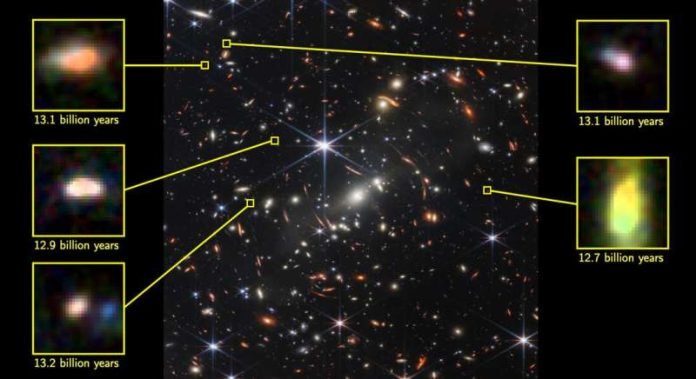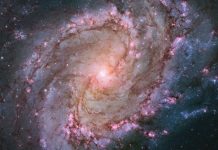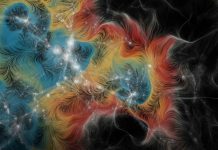
The recent findings from the James Webb Space Telescope have raised intriguing questions about the earliest galaxies in the universe.
Initial observations indicate that these galaxies are unusually large and massive, challenging our understanding of how structures form in the universe.
Several theories have been proposed to explain this discrepancy, but a new study from the Cosmic Dawn Center suggests an effect that has never been explored in such early epochs, potentially suggesting that these galaxies may be even more massive than previously thought.
The Mystery of Massive Early Galaxies
Ever since the release of the first images from the James Webb Space Telescope, reports of increasingly distant galaxies have emerged, causing concern due to their size and mass.
According to our current understanding, based on the ΛCDM model (Lambda Cold Dark Matter), these galaxies should not have had sufficient time to accumulate such a vast number of stars.
Exploring Alternative Explanations
While it is premature to propose a paradigm shift, there are several factors that could influence these observations. First, the estimated age of the observed galaxies may be underestimated.
Second, their stellar masses could be overestimated. Finally, it is possible that these observations have been serendipitous, capturing only the most massive galaxies from that period.
Examining the Pixel-by-Pixel Approach
Clara Giménez Arteaga, a Ph.D. student at the Cosmic Dawn Center, has delved deeper into the issue by investigating a novel approach.
Traditionally, a galaxy’s stellar mass is calculated by measuring the total amount of light emitted by the galaxy and determining the number of stars required to produce that amount.
However, Arteaga’s study focused on analyzing individual pixels within a sample of five galaxies observed by the James Webb Space Telescope.
Surprising Results
Arteaga discovered a significant discrepancy when comparing the stellar masses determined by the traditional whole-galaxy approach and the pixel-by-pixel method.
In fact, the inferred stellar masses using the pixel-by-pixel method were found to be up to ten times larger than the previous estimates.
The diagram presented in the study demonstrates this stark difference, with all galaxies lying above the expected line of agreement between the two approaches.
The Dominance of Bright Stars
The reason behind the inflated stellar mass estimates becomes apparent when considering the composition of stellar populations. Galaxies consist of both bright, massive stars and smaller, faint stars.
When analyzing the combined light from a galaxy, the brightness of the massive stars can overpower and overshadow the faint stars, leading to an underestimation of their contribution to the overall mass.
Implications and Future Directions
Stellar mass is a crucial parameter for characterizing galaxies, emphasizing the need to accurately resolve their structures.
However, achieving high resolution for the most distant and faint galaxies can be challenging.
This effect has been previously studied at later epochs in the universe’s history, but Arteaga’s research extends it to much earlier periods.
To refine our understanding of the true stellar mass, further investigations are required to identify alternative indicators that correlate with the accurate mass measurement.
By quantifying and assessing the prevalence of this effect at earlier epochs, we can make significant progress in determining robust stellar masses of distant galaxies—a primary challenge in studying the early universe.
The ΛCDM Model
The ΛCDM model, short for Lambda Cold Dark Matter, represents our best current understanding of the structure and evolution of the universe.
It is based on the well-tested theory of general relativity, which describes the relationship between matter and space.
According to this model, the universe is predominantly composed of dark energy (represented by Λ) and cold dark matter (CDM).
While ΛCDM has been highly successful in explaining numerous phenomena, many questions remain unanswered. The nature of dark matter and energy is still unknown, and general relativity is an incomplete theory.
Therefore, it is anticipated that ΛCDM will eventually be expanded or replaced by a more comprehensive theory as our knowledge advances.
The study was published in The Astrophysical Journal.
Copyright © 2023 Knowridge Science Report. All rights reserved.



